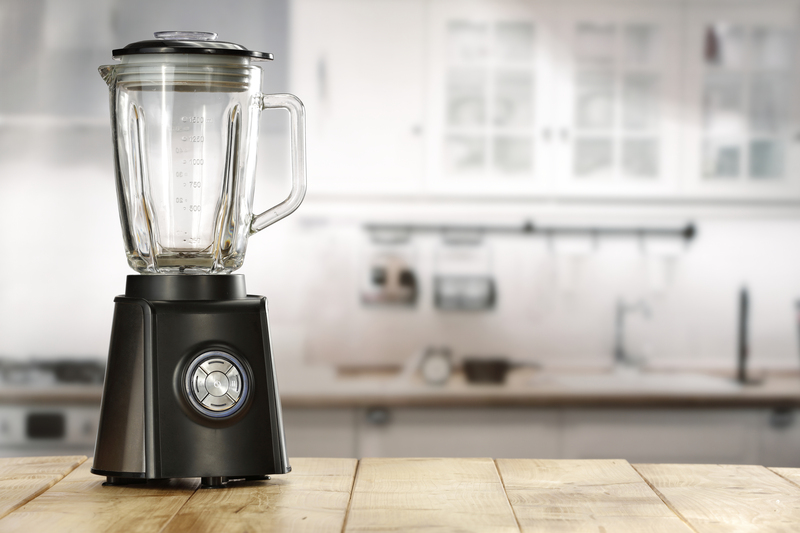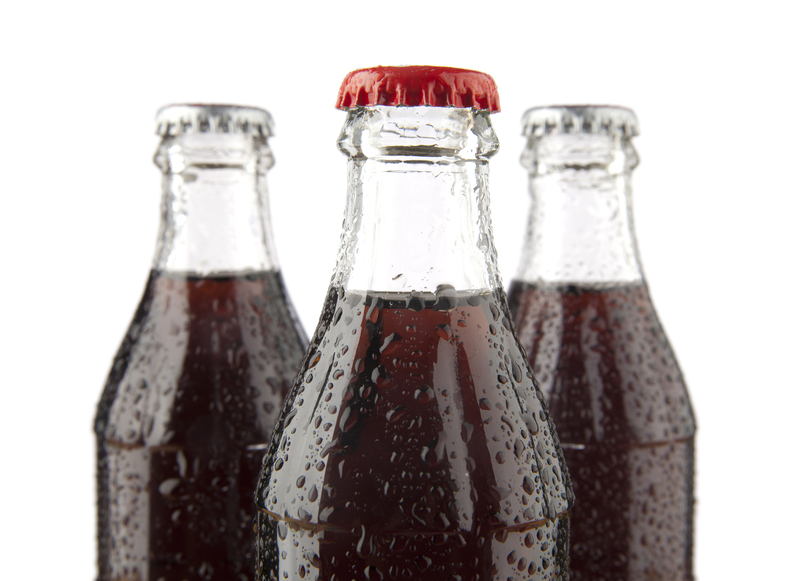Overcome Grease: Beginner's Guide to Clean Enamel Oven Trays
Posted on 29/06/2025
Overcome Grease: Beginner's Guide to Clean Enamel Oven Trays
Cleaning enamel oven trays can feel like an uphill battle, especially when stubborn layers of grease and burnt-on food refuse to budge. If you're a beginner or just looking to restore your trays to their former shine, this comprehensive guide will give you the knowledge, methods, and confidence required for getting your enamel oven trays sparkling clean. From identifying the best grease removal techniques to mastering daily maintenance, you'll find everything you need right here.
Why Enamel Oven Trays Need Special Care
Enamel oven trays are a popular kitchen staple. Their smooth, glass-like surfaces are designed to be both attractive and resilient. However, frequent use means they're prone to grease buildup, burnt food, and staining. But what makes their cleaning unique compared to standard metal trays?
- Durable coating: Enamel trays feature a protective glaze that resists rust but can chip with harsh scrubbing or chemicals.
- Heat resistance: These trays withstand high oven temperatures but are sensitive to abrupt temperature shifts.
- Non-stick properties: While the surface is less sticky than some metals, grease still accumulates over time.
Regular and proper cleaning not only keeps your trays looking new but also extends their lifespan and ensures hygienic food preparation.

Understanding Grease: The Real Challenge
Before diving into methods for cleaning enamel oven trays, it's helpful to understand why grease is so stubborn:
- Heat-bonded: Oven temperatures cause fats and oils to polymerize, making them stick more tenaciously to surfaces.
- Carbon accumulation: Regular use leads to burnt-on carbonized residues that normal dish soap struggles with.
- Stain potential: Prolonged exposure can stain the enamel, diminishing its glossy appearance.
With this knowledge, you can appreciate the importance of a strategic and gentle cleaning approach.
Beginner's Essentials: What You'll Need
Gathering your supplies before you start cleaning your greasy enamel oven trays will make the process smoother. Here's a list of recommended items:
- Soft or non-scratch sponges
- Plastic scrapers (optional)
- Baking soda
- White vinegar
- Mild dish soap
- Warm water
- Microfiber cloths
- Rubber gloves
Avoid using steel wool, abrasive scrubbers, or harsh chemical oven cleaners--they can damage the enamel surface, causing chips or dull patches.
How to Clean Enamel Oven Trays: Step-by-Step
Step 1: Soften the Grease
Start by removing loose debris and soaking your tray:
- Scrape off excess food or grease gently with a plastic scraper or spatula.
- Fill your sink (or tub, for larger trays) with hot water. Add a generous squirt of mild dish soap.
- Submerge the tray and let it soak for at least 30 minutes, or up to a few hours for stubborn stains.
Why this works: The heat and detergent help break down the grease, making it much easier to remove without excessive scrubbing.
Step 2: Apply Baking Soda Paste
For persistent grease, use baking soda--a safe, natural abrasive:
- Mix a few tablespoons of baking soda with a bit of water until you get a spreadable paste.
- Apply the paste to greasy or stained areas. Let sit for 15-20 minutes.
- Gently scrub with a soft sponge or brush in a circular motion.
Baking soda cuts through tough grease and lifts stains without scratching the enamel.
Step 3: Vinegar Rinse
Vinegar is a powerful grease cutter that also neutralizes odors:
- Mix equal parts white vinegar and warm water in a spray bottle or bowl.
- Rinse or spray the tray, focusing on greasy spots.
- Hear a fizz? That's the baking soda and vinegar reaction loosening residue!
- Give the tray a final scrub, then rinse thoroughly with warm water.
*Tip: For heavily soiled trays, repeat steps 2 and 3 until satisfied.
Step 4: Drying and Finishing Touches
Once grease and residue are gone, speed up drying with a clean microfiber cloth. Air drying is also effective but wipe away any water spots to avoid mineral streaks.
Advanced Techniques for Extremely Greasy Enamel Trays
If regular methods aren't enough for baked-on deposits, try these:
- Baking Soda & Hydrogen Peroxide: Mix baking soda and hydrogen peroxide for a paste. Apply, let sit for 15-30 minutes, then scrub gently.
- Boiling Water & Dish Soap: Place your tray on the stove (if safe), fill with water and a little dish soap, and heat gently for 10-15 minutes. Allow to cool before scrubbing.
- Lemon and Salt: Cut a lemon in half, dip in salt, and use it to scrub. The citric acid and gentle abrasiveness lift tough grime and deodorize naturally.
Caution: Always check your oven tray's care instructions before exposing it to extreme technique variations.
What To Avoid When Cleaning Enamel Oven Trays
- Don't use steel wool or metal scouring pads--these scratch enamel surfaces.
- Avoid corrosive or bleach-based cleaners that can dull or damage the glaze.
- Don't shock trays with hot-to-cold water transitions; this can cause the enamel to crack.
- Never use oven self-cleaning mode on trays unless the manufacturer recommends it--it may warp or discolor enamel finishes.
By avoiding these common mistakes, you'll protect your enamel oven trays and keep them in optimal condition for years to come.
Maintenance Tips: Keep Your Enamel Oven Trays Grease-Free
Prevention is always easier than cure when it comes to grease removal. Keep your trays clean and glossy with these simple routines:
- Line with parchment or foil: For messy bakes or roasts, line the tray first to catch most grease spills.
- Wipe after use: Even if no major spills occur, a quick wipe with a soapy sponge after each use prevents buildup.
- Deep clean monthly: Give trays a full soak and scrub every few weeks to prevent stubborn accumulations.
- Store dry: Ensure trays are thoroughly dry before stacking to prevent moisture damage or odors.
- Avoid stacking heavily: Don't stack too many trays together, as this can chip the delicate enamel edges.
Natural Alternatives and Green Cleaning Solutions
Many effective cleaning solutions are already in your kitchen! Eco-friendly options are not only great for the environment--they're also gentle on enamel tray coatings. Here are some popular green cleaning combinations:
- Baking soda & vinegar: As outlined above, this dynamic duo is safe and effective.
- Lemon juice: The acidity of lemon lifts stains and leaves a fresh scent.
- Cream of tartar: Mix with water to form a paste--it's slightly abrasive yet non-damaging.
- Castile soap: This mild soap cleans efficiently without harsh chemicals.
Using gentle, natural cleaners is often sufficient for maintaining a clean enamel oven tray and will help extend its life.
Common Questions About Cleaning Enamel Oven Trays
Can I use commercial oven cleaners on enamel trays?
Most commercial oven cleaners are too harsh for enamel. They can strip away the protective coating, causing discoloration or chips. Stick to gentle, homemade mixtures or check the product label for enamel compatibility.
Why does my tray look dull after cleaning?
Dulling often results from abrasive scrubbing pads or harsh chemicals. To restore shine, polish with a small amount of vinegar diluted in water and buff with a microfiber cloth.
How often should I clean my enamel oven trays?
Ideally, give your trays a quick cleaning after each use and a deeper soak-and-scrub every month. Heavily used trays might require more frequent attention.
My tray has stubborn black marks--what should I do?
Try baking soda and hydrogen peroxide, as described above. For persistent marks, repeat the treatment or try a paste of cream of tartar and water. If a mark won't budge, it may be a stain embedded in the enamel; this won't impact performance, but avoid aggressive scrubbing.
Can I use a dishwasher for enamel oven trays?
While some enamel trays are dishwasher safe, excessive dishwasher use may dull the surface over time. Hand washing is gentlest for maintaining the shine and durability of your oven tray.

Top Mistakes Beginners Make (And How To Avoid Them)
Cleaning enamel trays isn't rocket science, but certain pitfalls can lead to frustration or even tray damage. Here's how to sidestep common errors:
- Avoid rushing the soak: Give the detergent plenty of time to dissolve grease--for stubborn cases, let it sit overnight.
- Always check compatibility: Don't assume all cleaning agents are enamel-safe. When in doubt, test on a small section first.
- Scrubbing too hard: Gentle motions with non-scratch sponges will always yield the best results.
- Neglecting regular maintenance: Cleaning only when trays are extremely dirty makes your job much harder in the long run.
Conclusion: Enjoy Sparkling, Grease-Free Enamel Oven Trays
Learning how to clean enamel oven trays doesn't need to be overwhelming. With the right knowledge, gentle methods, and a little patience, you can overcome grease and keep your trays hygienic, glossy, and ready for your next kitchen creation. Remember:
- Soak to soften grime
- Baking soda and vinegar to lift stubborn grease
- Gentle scrubbing to protect the enamel surface
- Regular maintenance to prevent buildup
By following these simple yet effective steps, even beginners can make their enamel oven trays shine like new--no harsh chemicals required!
If you found this guide helpful, be sure to bookmark it for future reference and share it with friends or family searching for the best way to clean enamel oven trays. Happy baking--and even happier cleaning!




